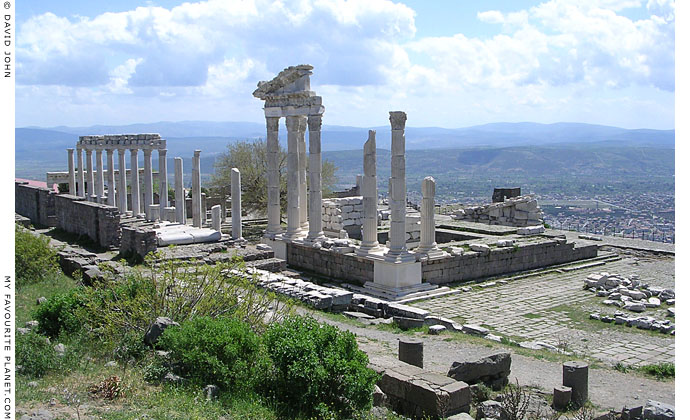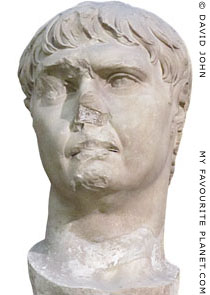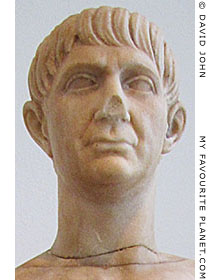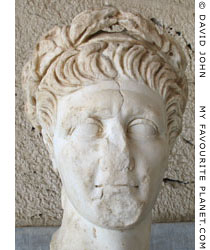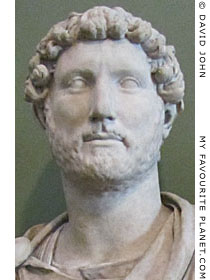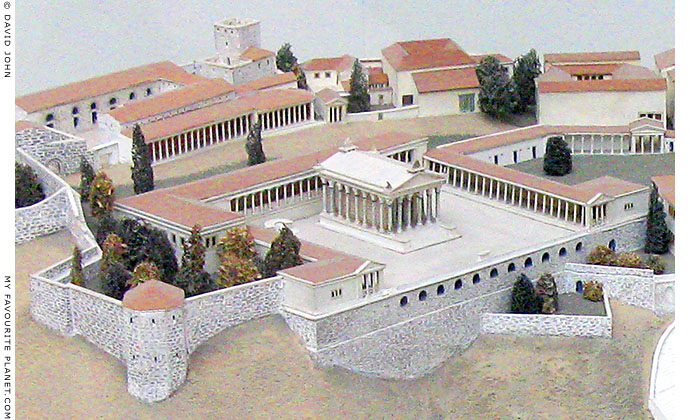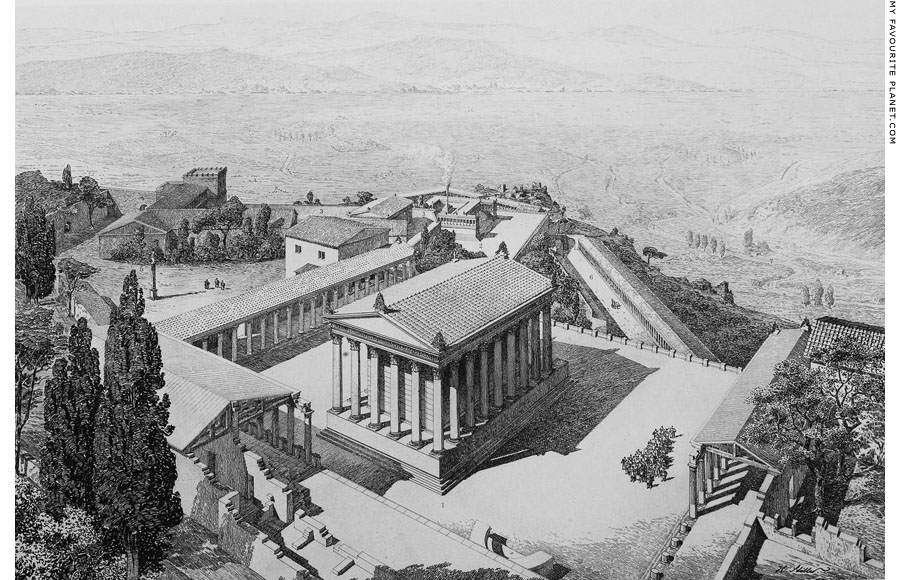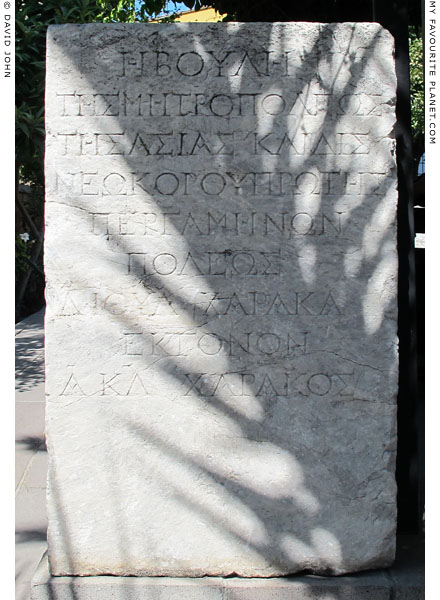The sacred precinct, or temenos (τήμενος), in which the Temple of Trajan stands is known as the Trajaneum, and was originally dedicated to Zeus Philios (Latin, Jupiter Amicalis) and Roman Emperor Trajan (Marcus Ulpius Nerva Traianus Augustus, 53-117 AD, reigned 98-117 AD). The epiphet "Philios" (friendly), previously not known at Pergamon, may signify the patronage of Zeus over the bond of friendship between Rome and the Greek cities of Asia.
The site of the temenos, built on a west-facing slope, was made level by the construction of a 68 × 58 metre terrace supported by a row of eleven arched tunnels (see gallery 1, pages 9 - 11).
Bulding of the Trajaneum began in the early 2nd century AD, during the reign of Trajan, and was completed by his successor and adopted son Emperor Hadrian (reigned 117-138 AD), who was also worshipped here. [1]
Hadrian travelled through Asia Minor in 123-124 AD, and inscriptions and the renaming of temples in his honour indicate that he visited Pergamon. He named Pergamon as the neokoros, the official centre for the imperial cult of Trajan and Zeus Philios (and inevitably himself) for the Roman province of Asia. This was the second time (of three) that the city was awarded the status of neokoros. [3]
The 18 metre-wide, white marble temple was Corinthian peristyle (columns all around), with six columns front and back, and nine along each side. It faced west, and the sacrificial altar was placed some distance from the front, close to the edge of the terrace.
During archaeological excavations, the remains of cult statues of Trajan (see photo, above right), Hadrian and Zeus Philios were discovered here, as well as a colossal statue of Hadrian which is now in the Bergama Archaeological Museum.
The temenos was enclosed on its north, east and south sides by stoas (roofed and colonnaded walkways). As with the
Sanctuary of Athena Nikephoros, the west side was left open so that the temple could be seen and admired from below the Acropolis and the surrounding countryside.




